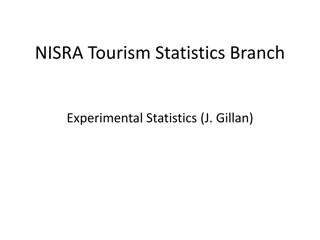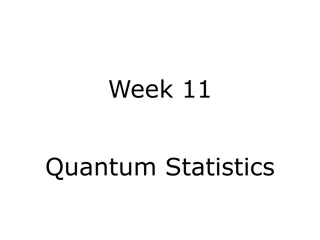AP Statistics Homework Agenda and Experimental Design Example
In this AP Statistics homework agenda, students work on warm-up questions, checkups, and a controlled experiment design example involving paper airplanes and natural light impact on test scores. The agenda covers various topics such as confounding variables, random vs. blocking, and controlled experiments. Students also receive a reminder about upcoming AP exams and the option to opt-out. Rubrics and images aid in understanding concepts like blocking in experimental design.
Download Presentation

Please find below an Image/Link to download the presentation.
The content on the website is provided AS IS for your information and personal use only. It may not be sold, licensed, or shared on other websites without obtaining consent from the author.If you encounter any issues during the download, it is possible that the publisher has removed the file from their server.
You are allowed to download the files provided on this website for personal or commercial use, subject to the condition that they are used lawfully. All files are the property of their respective owners.
The content on the website is provided AS IS for your information and personal use only. It may not be sold, licensed, or shared on other websites without obtaining consent from the author.
E N D
Presentation Transcript
Homework (AP) Pgs.269-270 #103, 105, 107, 109, 111 Agenda Warm Up Checkup time Check, copies Random vs. blocking Window/Door FRQ 2004 #2 Copies of question and scoring rubrics Skip? Exit Pass 10 min 10 min 15 min 10 min 15 min 5 min
Warm Up Mr. Colligan wants to figure out which type of paper makes the best paper airplanes. He makes them with graph paper and printer paper. He measures how far they fly. 1. What is the response variable? Let s assume Colligan does an experiment. 2. What is the factor? 3. What are its levels? 4. What are the treatments? The Heschong Mahone group, based in Fair Oaks, found that students whose classrooms had more natural light scored as much as 25% higher on standardized tests than other students. 5. Briefly describe the design of a controlled experiment to address this issue. 6. Identify at least two confounding variables.
Reminder AP exams If you do NOT want to take the AP Statistics exam, you need to tell me by next Friday 2/28
Blocking Notes 1 of 1 Confounding variables you DO know 1. You reasonably suspect a confounding variable 2. You didn t use stratified sampling Blocking Everything has that characteristic equally, then randomize within your block(s) Example: Does sunscreen prevent sunburn? (diagram, next slide) Block of high-melanin subjects, block of low-melanin subjects. Among high-melanin, randomly assign sunscreen/no-sunscreen. Among low-melanin, randomly assign sunscreen/no-sunscreen. Do Cheerios lower cholesterol? Matched-pair design is most common blocking Each pair can be blocked for same age, sex, income, etc.
EXAMPLE (sunscreen) Let s say you have 28 people. 18 people darker skin 10 people lighter skin Randomly assign Randomly assign 5 5 9 9 sunscreen no sunscreen sunscreen no sunscreen If you put sunscreen on people with darker skin, do they burn less? If you put sunscreen on people with lighter skin, do they burn less?
Blocking Notes 1 of 1 Confounding variables you DO know 1. You reasonably suspect a confounding variable 2. You didn t use stratified sampling Blocking Everything has that characteristic equally, then randomize within your block(s) Example: Does sunscreen prevent sunburn? (diagram, next slide) Block of high-melanin subjects, block of low-melanin subjects. Among high-melanin, randomly assign sunscreen/no-sunscreen. Among low-melanin, randomly assign sunscreen/no-sunscreen. Do Cheerios lower cholesterol? Matched-pair design is most common blocking Each pair can be blocked for same age, sex, income, etc.
140 155 156 166 173 174 185 192 193 194 195 199 208 219 Example: Matched Pairs Let s say you have 28 people. You want to see if Cheerios lowers cholesterol, and you want to control for pre-existing cholesterol. You measure all participants cholesterol (mg/dL), then pair them up as close as possible. 220 220 221 228 244 248 249 249 251 259 261 268 269 278 140 155 156 166 173 174 185 192 193 194 195 199 208 219 220 220 221 228 244 248 249 249 251 259 261 268 269 278 Randomly assign one person in each pair to eat Cheerios. See if their cholesterol goes down more than their partner .
Blocking Notes 1 of 1 Confounding variables you DO know 1. You reasonably suspect a confounding variable 2. You didn t use stratified sampling Blocking Everything has that characteristic equally, then randomize within your block(s) Example: Does sunscreen prevent sunburn? (diagram, next slide) Block of high-melanin subjects, block of low-melanin subjects. Among high-melanin, randomly assign sunscreen/no-sunscreen. Among low-melanin, randomly assign sunscreen/no-sunscreen. Do Cheerios lower cholesterol? Matched-pair design is most common blocking Each pair can be blocked for same age, sex, income, etc.
Door/Window Imagine you ve selected a simple random sample of 100 adult residents in West Sacramento. For the research question below, 1. What s a reasonable confounding variable to block for? 2. How would you do it? DOORS Does red wine reduce the risk of heart disease? WINDOWS Does Vitamin C prevent the common cold?
FRQ practice FRQ 2004 #2. Use whiteboard or notebook.
part (a) Since these researchers believe that the condition of hair changes with age but not gender, the volunteers are sorted from youngest to oldest. The volunteers are paired to form six blocks of size two. Block Volunteers Ages One 1, 2 20, 21 Two 10, 11 23, 24 Three 8, 9 44, 44 Four 3, 12 46, 47 Five 4, 7 58, 60 Six 5, 6 61, 62
part (b) Since these researchers believe that the condition of hair changes with both age and gender, the women are sorted from youngest to oldest and then the men are sorted from youngest to oldest. The women in the sorted list are paired to form blocks of size two, then the men are paired to form blocks of size two. Block Volunteers Ages Female 1 2, 10 20, 24 Female 2 8, 12 44, 46 Female 3 4, 5 60, 62 Male 1 1, 11 21, 23 Male 2 3, 9 47, 44 Male 3 6, 7 61, 58
part (c) No, the researchers should not randomly select three blocks to receive the new formula and then give the current formula to the other three blocks. They blocked on both age and gender to form these groups, because they believe that hair condition differs with both age and gender. Giving the youngest or oldest women (or men) the same formula defeats the purpose of blocking, because in a block design, randomization should be carried out separately within each block. For each block, put the volunteers numbers in a hat and pick one out. That number gets the new shampoo, and the other number gets the current shampoo.
Homework (AP) Pgs.269-270 #103, 105, 107, 109, 111 Exit Pass Douglas and Rowlinson (2009) interviewed 516 dairy farmers in the UK on whether they referred to their cows by name. They also measured the milk production of their cows. They found that cows whose owners called them by name produced an average of about 500 pints per year more milk than cows whose farmers did not call them by name. 1. Identify one confounding variable. 2. Briefly describe an experimental design to investigate this issue.























